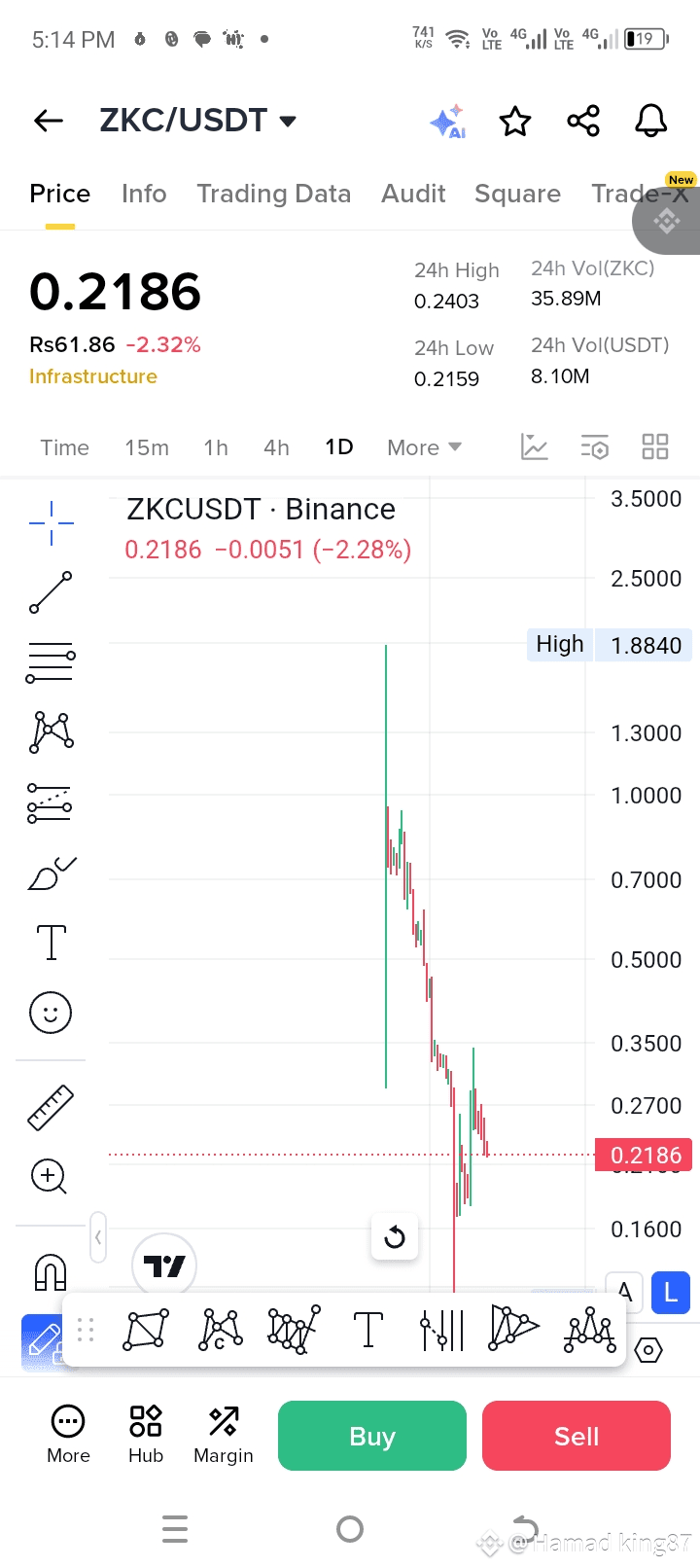Date of Analysis: October 22, 2025Executive Summary: Scaling Blockchain with Verifiable Computationof Boundless, and its native utility token ZKC, is a pioneering decentralized zero-knowledge (ZK) protocol designed to solve the fundamental scalability limitations of all blockchains. It functions as a universal ZK compute layer, decoupling complex execution from on-chain consensus.in the current Web3 architecture, every network validator must re-execute every transaction, leading to bottlenecks, high gas fees, and capped computational capacity. Boundless addresses this by offloading the heavy lifting of computation to a permissionless, global network of provers. These provers generate compact, cryptographically secure ZK proofs, which are then verified efficiently and cheaply on the blockchain.
The ZKC token is integral to this model, serving as.Staking Collateral: Required for provers to participate and secure the network.Reward Mechanism: Distributed to provers for generating proofs (Proof-of-Verifiable-Work).Governance: Granting holders voting power over protocol parameters and funds.Proof Payment: Used by developers to pay for the verifiable compute services.The project has experienced significant volatility in October 2025, marked by a high-profile regulatory challenge from the South Korean exchange alliance DAXA/Upbit over tokenomics, which triggered a sharp price drop, followed by an aggressive rebound after the issues were clarified and the exchange warning was lifted. This rollercoaster ride highlights both the token's market sensitivity and the foundation's rapid response capabilities.
Part I: The Technology of Boundless: Zero-Knowledge as a Service
Boundless's core innovation is establishing an economically incentivized, decentralized infrastructure for verifiable computation, making advanced ZK technology accessible across the entire multi-chain ecosystem.
1. The Scalability Problem and the ZK Solution
Blockchains are inherently limited by the gas limit and the need for global redundant computation. To scale, they must reduce the work required of on-chain nodes. Zero-Knowledge technology provides the optimal solution:A user (or a computer/prover) can execute a complex computation off-chain.The prover generates a tiny, cryptographically secure proof that the computation was executed correctly.The blockchain verifies this proof cheaply and quickly on-chain, eliminating the need to re-execute the original computation.Boundless transforms this technology into a service layer, shared by all blockchains, rollups, and dApps.
2. Core Architectural Components
The Boundless protocol stack is built around a specialized virtual machine and a unique consensus mechanism.
A. The Zero-Knowledge Virtual Machine (zkVM).Boundless leverages advanced zkVM technology (such as RISC Zero's zkVM) to ensure broad developer accessibility.
Functionality: This allows developers to write code in familiar languages like Rust or Solidity and have the Boundless network automatically generate ZK proofs for their computations. This significantly lowers the technical barrier for integrating ZK into dApps and Layer 2 solution
B. Proof-of-Verifiable-Work (PoVW) Consensu.The PoVW is the economic engine that secures and operates the network.Mechanism: It is a competition-based system where provers compete to be the first to generate a requested ZK proof.Incentives: Provers must stake ZKC tokens as collateral to participate. The winning prover is rewarded with ZKC tokens (via inflation and protocol fees). If a prover submits a faulty or malicious proof, their staked ZKC is "slashed" (removed). This financial incentive model ensures provers are honest and that the network remains secure.Decentralization: By incentivizing a global, permissionless network of provers, Boundless achieves a high degree of decentralization for its core service
3. Key Protocol Products and Use Cases
Boundless has two primary products currently driving adoption:Steel (ZK Coprocessor): This acts as a ZK co-processor for existing EVM-compatible chains. It allows developers to offload massive computations (like complex AI models, high-volume trading simulations, or multi-block state queries) to the Boundless network. This enables dApps to bypass the EVM’s gas and execution limits.OP Kailua: This is an enhancement for Optimistic Rollups. Traditionally, Optimistic Rollups rely on a lengthy fraud-proof window (often seven days) during which anyone can challenge a fraudulent state transition. OP Kailua integrates ZK fraud proofs, which can reduce the finality time from days to just hours, significantly improving the capital efficiency and user experience of these rollups.Verifiable AI: Boundless is positioning itself at the intersection of ZK and AI, providing a mechanism for verifying the execution of AI models off-chain. This is critical for trustless dApps using machine learning or complex prediction markets.Cross-Chain Communication: The universal nature of the proof layer allows blockchains to efficiently and securely communicate complex state changes, enhancing true interoperability
Part II: The ZKC Tokenomics and Market Volatility
$ZEC The ZKC token is the necessary fuel and security collateral for the Boundless ecosystem
1. ZKC Token Utility (Review)
The demand for ZKC is intrinsically linked to the demand for verifiable computation:Collateral (Staking): Provers must lock ZKC to gain the right to participate. This creates an immediate lock-up mechanism, reducing circulating supply as the prover network grow
Payment (Fees): Developers pay ZKC to the network to request a proof. These fees are then distributed to the provers and to the protocol treasury.Rewards (Inflation): Provers earn newly minted ZKC tokens for their service, which is designed to attract and retain the necessary computational resources.@Boundless #boundless $ZKC
